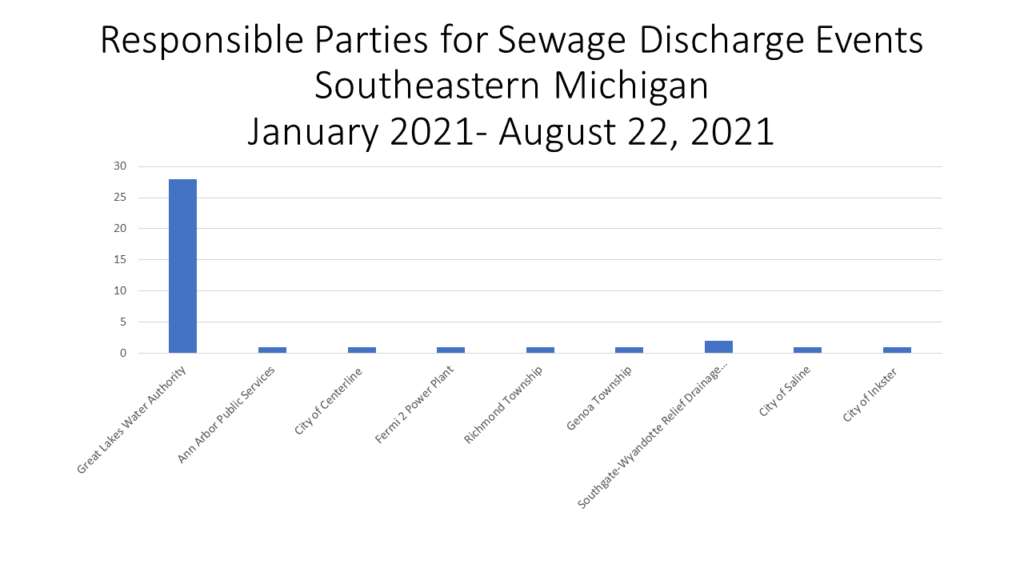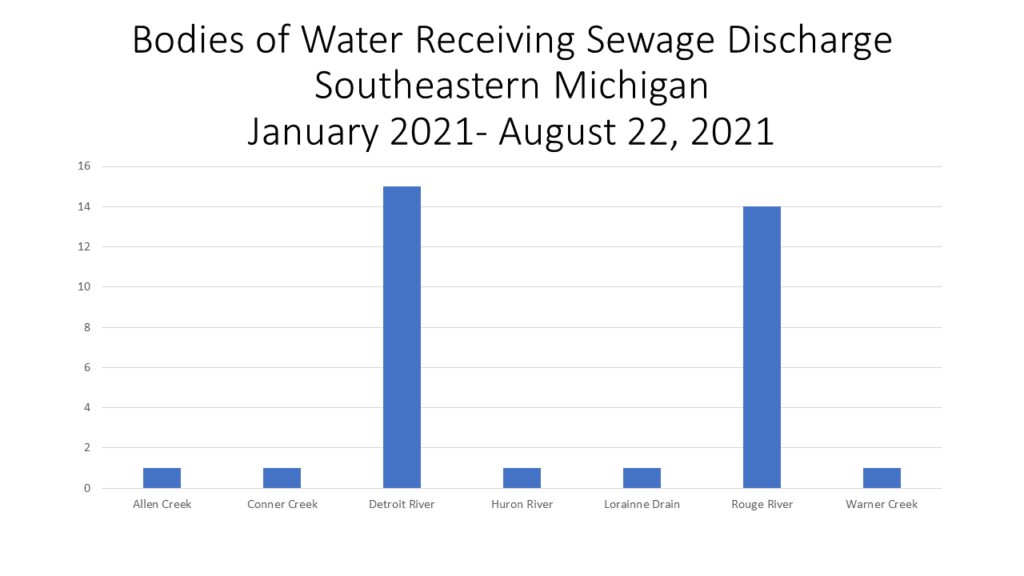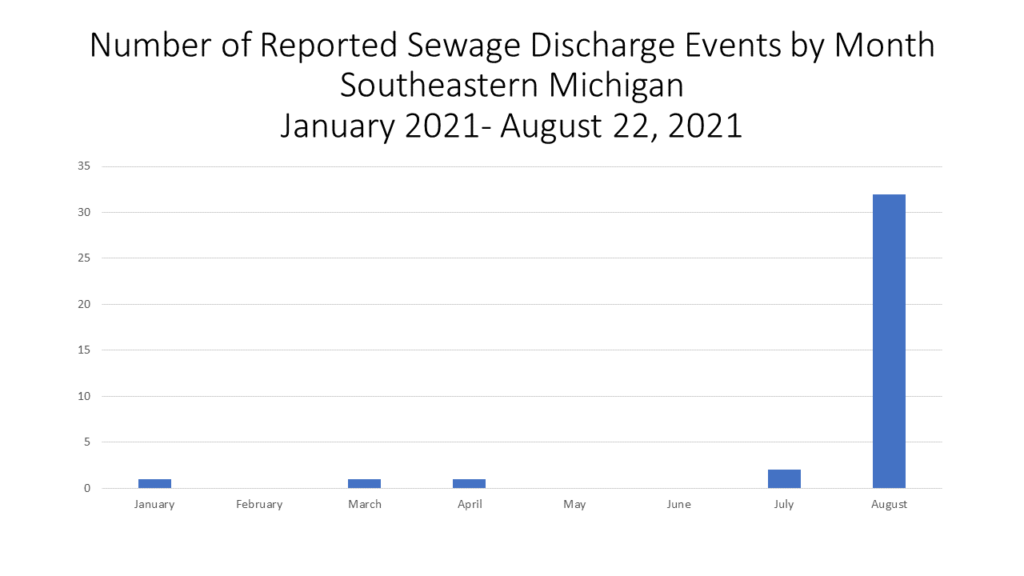Summer storms have brought on many issues this year, including flooding and long periods without power. Another affect of the heavy rain though is increased sewage overflow into our local rivers and lakes, which also means increased risk of contaminated waters. The Michigan Department of Environment, Great Lakes and Energy tracks discharges by three different categories: combined sewer overflow (CSO), sanitary sewer overflow (SSO) and retention treatment basin overflow (RTB). Each of these are discharges from a sewer system which contains untreated or partially-treated sewage. CSOs are discharges from older sewer systems designed to carry both domestic sewage and storm water, collectively referred to as combined sewage. Retention treatment basins often collect and treat this wastewater from CSOs to help avoid untreated overflows into the environment. However, they too can overflow, leading to an RTB overflow. SSOs are discharges of raw or inadequately treated sewage from municipal separate sanitary sewer systems, which are designed to carry sanitary sewage but not storm water.
Below is data on the type of overflows that have occurred in Southeastern Michigan in 2021 thus far. EGLE tracks this information and presents an annual report; the data for this post is the ongoing data for 2021 and has yet to be digested into a comprehensive report. Overall, the data shows that were have been 84 known and reported discharge events in Michigan in 2021. Of those 84, 37 have occurred in Southeastern Michigan. The charts below provide a deeper look at the type of discharge events, their locations and the responsible parties of the discharge events.





The above data highlights a few different points, including that the Great Lakes Water Authority (GLWA) had the highest number of discharge events in 2021 thus far; CSO discharge events are the most common; the Detroit River and the Rouge River are recipients of the highest number of discharge events; and August has had the most number of discharge events this far in 2021.
Now, to further break down the data. It should come as no surprise that the GLWA has had the most number of sewage discharge events because of its size. The GLWA is a regional water authority that provides drinking water and sewer service to more than 80 communities in Southeastern Michigan. The GLWA, by way of its formation in 2015, also inherited old infrastructure, which clearly needs updating to help prevent future overflows. For example, the Conner Creek discharge event that occurred during the first major rain storm of the summer, in early July, was a result of a lack redundancies for power. This event was one of the RTB overflow events, as the Conner Creek Pump Station is a CSO basin station, meaning the facility is meant to handle sewage overflow so it doesn’t go into the waterways. However, it does happen, and so far in 2021 there have been 9 such events.
As noted, CSO events occur when the system becomes overwhelmed by the combined sewage and untreated wastes are directly released into receiving waters, with the Detroit River and the Rouge River being the most common water in Southeastern Michigan. These CSO events are considered intentional because the system was designed to allow overflow into waterways once capacity of the wastewater treatment plant to store more liquid or process its maximum volume is reached. There are several discharge points in Southeastern Michigan, with the GLWA operating most of them. In total, the GLWA has 9 CSO discharge locations along the Detroit and Rouge Rivers and 62 additional untreated discharge points. Of those 62 untreated discharge points, six discharge only in the event of an emergency that jeopardizes property (i.e. wide-spread basement flooding). The remainder of the points discharge at varying frequencies. These 62 sites are responsible for about 5 percent of total combined sewer overflow discharge volume. In 2021 there have been 20 CSO events in Southeastern Michigan, 19 of which the GLWA was responsible for and all of which discharged in the Detroit or Rouge rivers.
CSO events are tied to heavy rainfall, which explains why August had the highest number of overflow events. It is predicted that these events will only increase as our climate changes. This of course is concerning because the overflows are forms of pollutants and release hazardous materials into the environment, causing health, safety and environmental issues.
Ways to help mitigate CSOs include sewer separation, expanding CSO treatment facilities and adding retention basins and investing in green infrastructure (bioswales, rain gardens). Actions are being taken nationally and locally to help better prevent CSOs, but a total overhaul of our water and sewer infrastructure would cost billions upon billions of dollars. So far, the GLWA has invested $1.2 billion in CSO facility upgrades, and while the amount of CSOs has been reduced by 95 percent, they still occur and have long-term affects on the region.